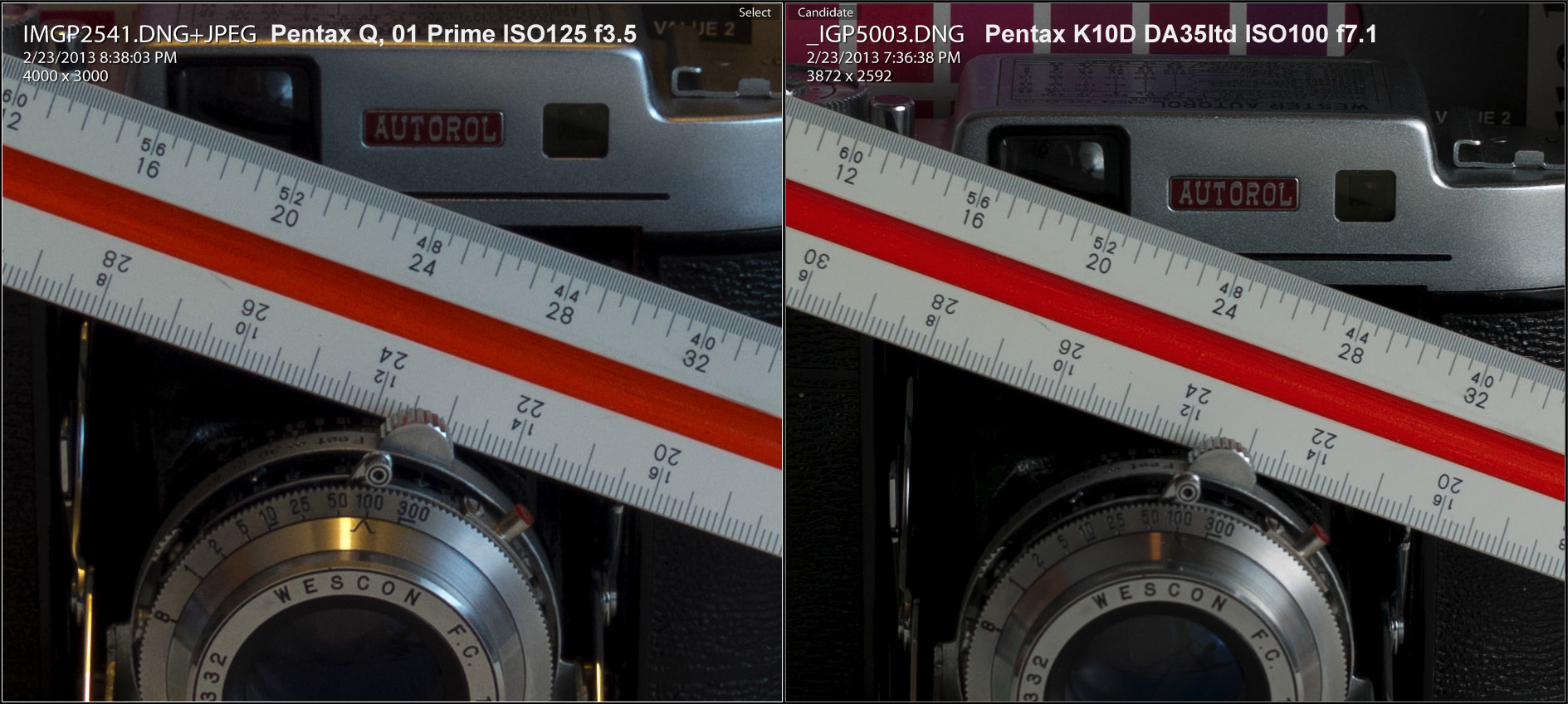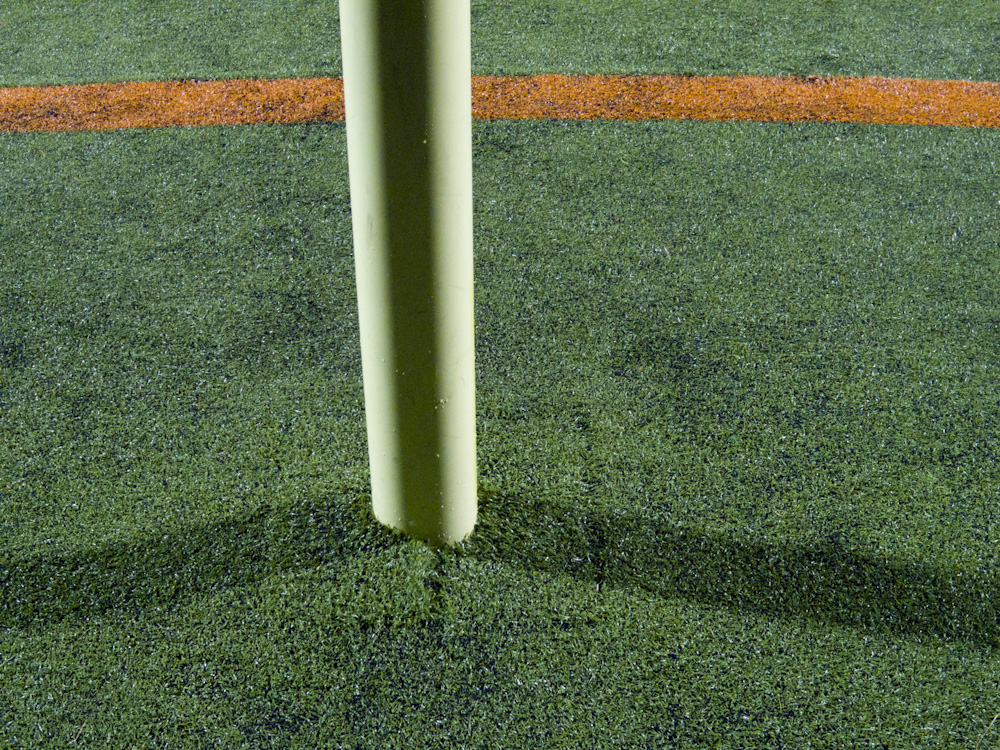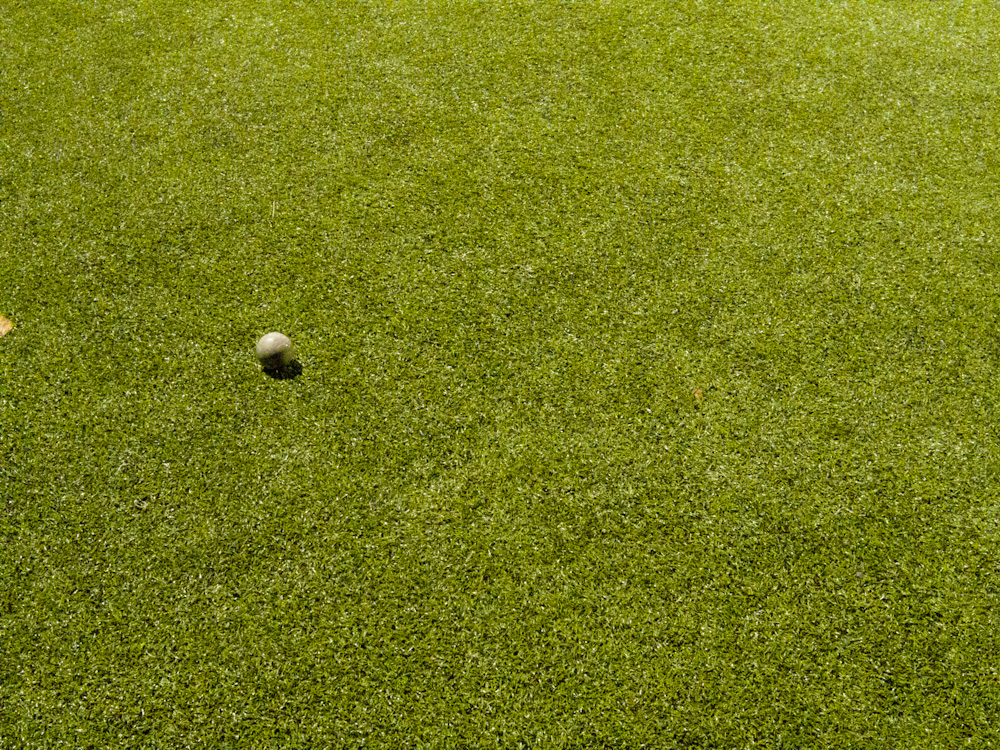Oct
18
2014

I think the fish eye lens on the Pentax Q is the thing that really makes the little system. There is no other fit in your pocket camera combination that matches it. It is just pure photography fun. My thoughts and images can be seen here
Pentax Q Fish-eye
no comments | tags: Pentax, Q | posted in Cameras, Photography
Mar
21
2013

I chose this lens from my parts bin because it was a complete package including a helical focus system, unfortunately I don’t know what camera it came off but it appears to be a 40mm f2.8. That 40mm when converted to a full frame equivelent is 220mm. Once I figured out the distance it needed to be placed from the sensor I mounted it on the end of a piece of ABS tubing which also attached to a modified Q to C-mount adapter I had purchased on the internet. Initial testing was done with no aperture, it was wide open. The resulting images were soft and lacked contrast as you can see with these following images.
My next step was to line the inside of the lens with black velvet paper to keep down the internal reflections and create a fixed aperture to try to improve the lens performance. These changes had a dramatic impact on image quality.
But I wasn’t quite done. I made a new aperture that was a bit smaller and did some more testing. This is the state that it is at right now.
I was likely 100 feet away from the rebar in the one picture and you can see that the bridge, hundreds more feet away, was also in focus. That isn’t always a desirable quality especially if you want to use selective focus to separate different planes in an image but on the other hand this is a feat you can’t easily accomplish with a large sensor camera if it is what you want. And the lens is very small I might add.

A final note here is a comparison 100% crop from the Nikon P7000 at full zoom (200mm equivalent) vs the Q homebrew (220mm equivelent). The Q is on the left.

3 comments | tags: lenses, Pentax, Q | posted in Cameras, Photography
Feb
28
2013
When Pentax released the tiny mirrorless Q camera a lot of people’s immediate reaction was to dismiss it solely based on its sensor size of 1/2.3″ (6.17 x 4.55 mm), but in doing that I think they are missing the point. I don’t see the Q as a replacement for any other type of camera necessarily but something entirely unique. I find the image quality adequate for snap shots particularly with the 8.5mm prime lens and with the addition of the fisheye lens there is nothing else like it that can fit in a coat pocket. The only time I choose to take my larger Nikon P7000 is if I think I will need the longer lens but that too can be addressed with the recently announced Pentax 06 zoom with its f2.8 83mm to 249mm equivalent in terms of “full frame”. But as this is a comparison of sorts, despite the difference between the type of cameras what really matters is the image in the end. Yes the K10D is now 6 years old but it’s still a DSLR and you would expect it to decisively out perform the Q if you just look at the size of the sensors.

For this test I used the Pentax 01 Prime lens at an aperture of f3.5 which gave me enough depth of field for my scene yet did not result in a softening of the image due to diffraction. For the K10D I used the excellent Pentax SMC DA35 ltd. at an aperture of f7.1 which also yielded enough depth of field and good lens performance. There is a small difference in the field of view for these lenses so I did my best to match it and also the Q sits much lower on the tripod so I had to adjust for that as well. Both cameras were set to P-TTL flash exposure using two AF540fgz flashes into an umbrella. I found the Q exposure and colour to be slightly more accurate but both were shot as RAW. My purpose was not to test the two cameras necessarily at the same setting but at their individual best much as I would try to use them.

You can see in this first example that the K10D’s rendering of the bristles is much sharper and better defined. This is from an area of the image some way from the center but not really yet a corner. Chalk one up to the K10D and the DA35 ltd

Towards the center of the image I find it to be a bit of a toss-up they both seem to have a similar level of sharpness with the slightly higher resolution of the Q perhaps allowing for more detail, I would call this a tie though when I take into account what appears to be slightly different point of sharpest focus.

At 1600 ISO though the two cameras behave very differently there is more noise in the Pentax Q image but it also retains more detail as seen in the marks on the ruler. As a person that still shoots 1 to 2 rolls of film a week I find the Q produces noise that looks a lot more like film grain so I prefer it. What I take from this testing is that for everyday shooting the Q performs well enough that it can be my primary camera and only when I need to do something outside its capabilities is it necessary to choose something else. Of course many people are saying this of smart phones with their cameras so it stands to reason that the Q is up to that task. A small amount of online research shows just how much effort is going into engineering small sensors mostly because of smart phones so there is likely to be a quicker and more dramatic level of development in this area.
5 comments | tags: K10D, Pentax, Q | posted in Cameras, Photography
Sep
25
2011
While playing with the Pentax Q I allowed myself to mostly forget about the technical and pretend that I don’t know much about photography. Some might argue that would be quite easy, but taking this position allowed me to experience the Q how I think it is intended. Pentax seems to have broken most of the rules that have governed digital photography. The last ten years have seen incremental advancements in technology making each new camera slightly better than the last. With the Q Pentax appears to have said OK things in the world of cameras are pretty good lets start over. What I mean by this is that as people are agonizing over whether to choose a camera with a slightly smaller sensor to get a smaller camera, Pentax has just said forget about the sensor size you want small this is what it takes. Nikon has done a similar thing with their new 1 system cameras the j1 and v1 and used a sensor much smaller that APSC but which is still 4 times the surface area of the Q’s sensor (116mm vs 28.5mm). The Internet is rife with information and arguments about how sensor size affects high ISO low light performance so I won’t bother with that but just present where the current state of the art appears to be, all be it in a very tiny camera.
So here are some examples of the high ISO performance with details, I haven’t applied any luminance noise reduction to the images but have left the color noise reduction of Lightrom at the default 25 for the RAW files. I also haven’t done any distortion correction correction to the RAW images.

ISO 1600 f3.5, 1/40 sec RAW and a 1 to 1 crop


This one was shot as a jpeg with no further processing. ISO 3200 f2.5 1/60 sec, and the 1 to 1 crop follows


ISO 6400 f4.5 1/60sec RAW again no luminance noise reduction applied and the 1 to 1 crop

So what are my conclusions from what has to be admitted as a very short 3 hours with the camera. It’s smallness defines it. I don’t think that I was able to show how small it is through pictures which seems odd. You would think you can just put it beside something of a known size and there you are, but it isn’t quite that simple. It changes the measuring stick of small. I’m not entirely sure how to define this camera because there is a trade off with the size and I think that is in the absolute image quality. Perhaps I’m not able to pretend hard enough to let the tech geek in me forget about the image files and only see the pictures. I’m not sure that the Q will attain main stream acceptance but I’m also not sure that was what Pentax was going for, the build quality of the Q is extremely high and it just looks cool.
1 comment | tags: Cameras, Pentax, Q | posted in Cameras, Photography, Uncategorized
Sep
22
2011

OK it’s small every one understands that, but it is really really small, smaller than I can easily convey. Despite the diminutive size it is easy to use and has direct access to all the necessary controls and quickly becomes just a really tiny image making machine. Walking around with it I could quickly compose shots on the rear LCD and it was quick to lock focus in all but the most challenging conditions, ones where I think any focus system of this type struggles and even phase detect systems of DSLR’s slow down.
I shot mostly in Program mode and used the rear dial to change the aperture while letting the camera choose the shutter speed, effectively using it as aperture priority/program hybrid. The ISO has a direct button and once selected can be changed with the rear dial without the need to hold down any other buttons. This menu selection stickiness is a welcome change from having to press the ISO button of my DSLR while changing with the dial. It’s necessary because there really isn’t enough room on the camera to have more than one finger poking something at any one time. That said all the variables that you would want to change are easily done with one hand. As for the ergonomics of holding the camera, it is quite good, the front grip area has space for a finger which really gives a solid hold with your thumb on the back. The buttons have a very nice high quality feel as does the entire camera.
I didn’t really have a good opportunity to shoot any moving subjects so I can’t really say how it performs under those conditions. My impressions of the JPEGS out of the camera are that they are free of objectionable noise bellow 1600 ISO but above that you begin to see smearing of detail. Leaving the technical aside it performs well and is unobtrusive, freeing you to make pictures. I suppose the question you are left with is whether the trade off of size and fun is worth what is in my opinion a slightly lower image quality than what can be gotten with larger interchangeable lens cameras. I find myself to be between the two camps. I absolutely love the build and size of the Q but I find I’m, possibly unfairly, comparing it to what I can do with my DSLR. I certainly wouldn’t have felt comfortable moving around in the places I did today with a large camera and lens.
I have to admit not reading the manual because of the limited time I had and therefore I didn’t make as many changes as I might have otherwise. One thing I find unfortunate is that it can not be used to wirelessly control external flashes, perhaps this is as much for the fact that the curent flashes dwarf the camera, although they can be mounted and used on the hot shoe. In my next post I will have some sample images after I sort through what I took today.



3 comments | tags: Cameras, Pentax, Q | posted in Cameras, Photography























































